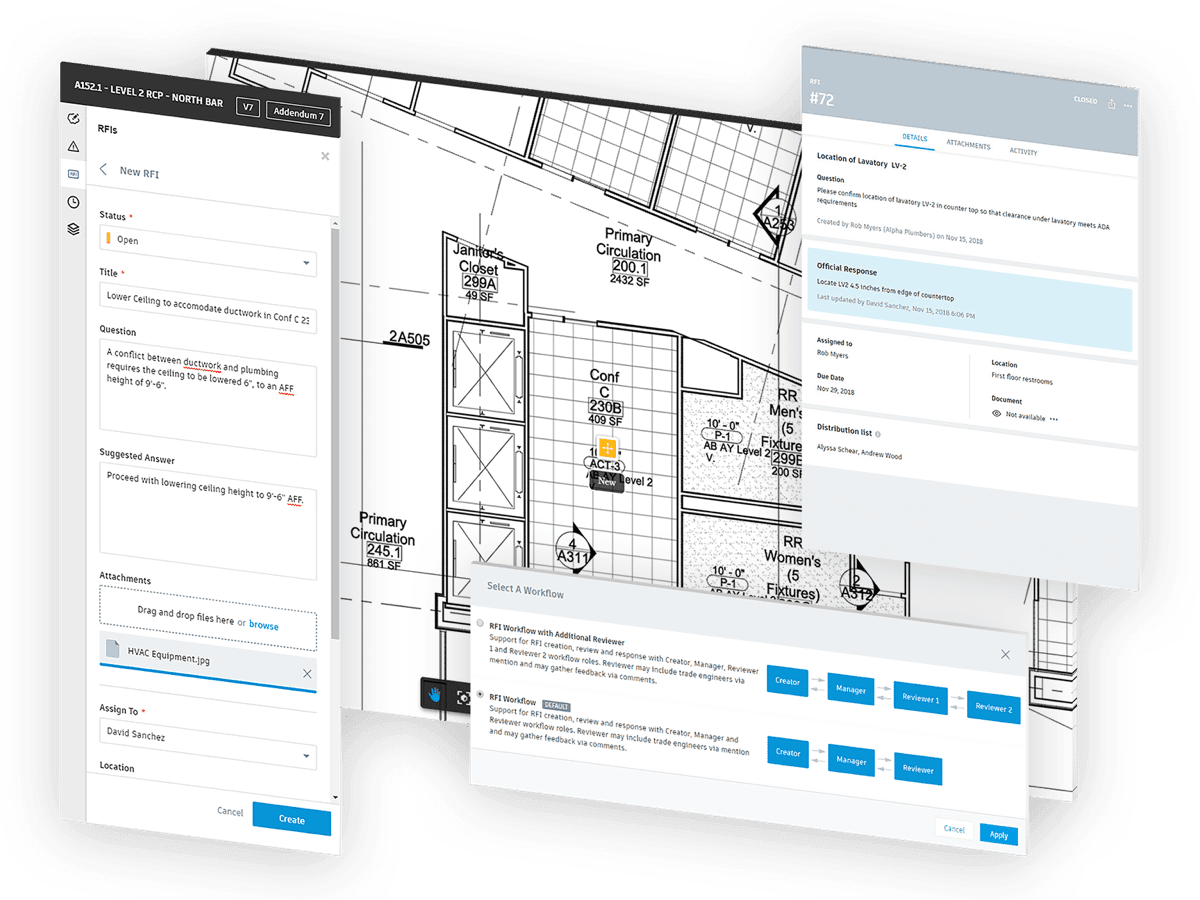
W. M. Jordan’s Virtual Design and Construction (VDC) Team works with designers and engineers to help map and plan many parts of a project before construction ever begins. This allows for many potential layout and design issues to be solved at the beginning of a project, and can be used in real time to rework mechanical, electrical, and plumbing layouts to prevent clashes.
Working with Hanbury on Virginia Tech’s Creativity and Innovation District (CID) Residence Hall project, our VDC team utilized a program called Autodesk BIM 360 to facilitate real time plan changes and virtual model updates with the team at Hanbury.
“A collaboration like this, I believe, is unprecedented,” said W. M. Jordan’s Senior VDC Manager Dwayne Sellars. “Typically, a designer will make their model, give it to us, and if we need to make any changes, it could be a lengthy process – many files and terabytes of data being exchanged between our teams. Working with Hanbury in a cloud based data exchange, we can see instant corrections and reactions to design plans.”
Using BIM 360 meant a smoother process for the team at Hanbury too.
“With a design-build project such as Virginia Tech’s CID Residence Hall, technology like BIM 360 allowed us to speed up the information exchange with Dwayne and his team,” said Art Gaskin, Principal and Project Manager for Hanbury. “Dwayne had access to the model in real time, which allowed W. M. Jordan’s information to be always up to date.”
A practical example of BIM 360 in action occurred when Dwayne and his team found a clash between an MEP system and the building design that resulted in a ceiling needing to be lowered six inches. Real-time data transfer allowed Dwayne to get in touch with the team at Hanbury and shortly after, have an accurate and up-to-date building model at his fingertips. This also allowed the construction team to get it right the first time, instead discovering the problem as they were building.
Giving W. M. Jordan full access to the design content required a level of trust from the team at Hanbury. A great deal of planning went into establishing roles and responsibilities between Hanbury and W. M. Jordan, ensuring everyone was on the same page.


The Hanbury team also noted that BIM 360 made it very easy for entire teams to collaborate.
“The keynote sharing feature of BIM 360 proved to be very valuable. It allowed each team member to leave notes and ideas on certain parts of the project, increasing collaboration throughout the team,” said Erika Feggestad, Associate Principal and Architect for Hanbury.
Both teams agreed that this approach to design implementation on the construction site works especially well for jobs with a tight time frame. The faster the virtual model of the building can be updated; the faster consultants and trade partners are up to speed and can continue with their work.
With Design-Build projects and BIM 360, teams can collaborate in real time, keeping building models up to date and discovering issues in the model before they occur in the field. Utilizing this technology helps W. M. Jordan projects run more efficiently, resulting in a better construction experience for everyone involved.

